|
|
|
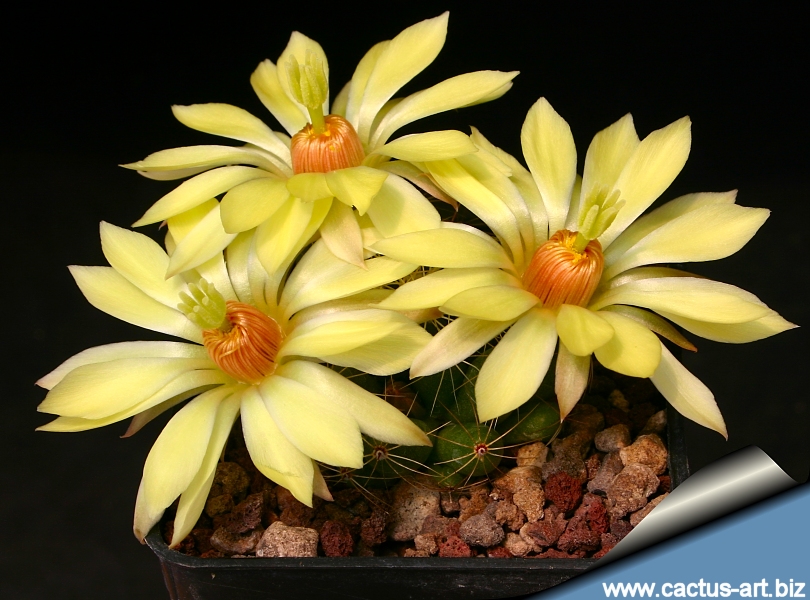
Mammillaria sphaerica
|
|
Description: Small, light green clumping
cactus, 5-7 (12) cm in diameter, with 30-40 (or more) branches.
Roots: Thick taproots, large in upper
portion.
Stems: Subspheric, 4-5 × 5-8 cm, soft, flaccid; cortex and pith
not mucilaginous; latex absent.
Tubercles: Conical to cylindrical, flabby 12-25 × 5-8 mm; axils
slightly short, woolly, without bristles;
Spines: 13-15 per areole, whitish to
yellowish, glabrous; radial spines 12-14 per areole, grey, bristlelike,
6-9 × 0.1 mm, stiff; central spines 1 per areole, porrect, straight, not
hooked or curved, similar to radial spines, 3-6 × 0.25 mm; subcentral
spines 0.
Flowers: Broad, funnel-form, brilliant
lemon yellow, 4 × 5-7 cm; outermost tepal margins entire (or minutely
toothed near base); inner tepals bright yellow, paler near base, 20-30 ×
5-8 mm; stigma lobes cream to pale yellow or greenish, 5-6 mm.
Fruits: greenish white to dull pinkish tan or maroon, ovoid to
short cylindrical, 10-15 × 7 mm, floral remnant weakly persistent.
The
fruits are juicy throughout, and have a pleasant aroma.
Seeds: black or brown, 1.3 × 0.9 mm.
Blooming season (Europe): July; fruiting May.
|
|
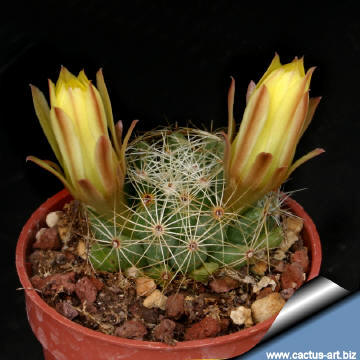 |
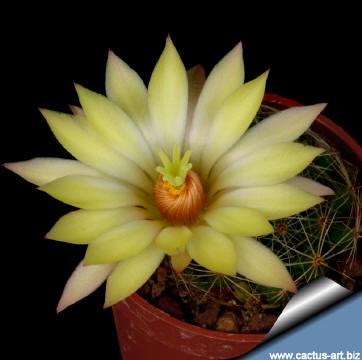
|
|
. |
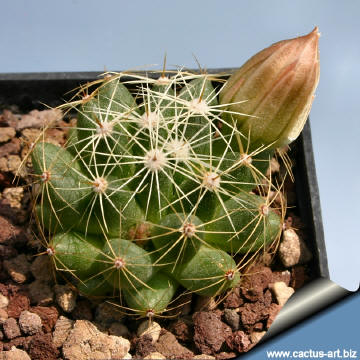 |
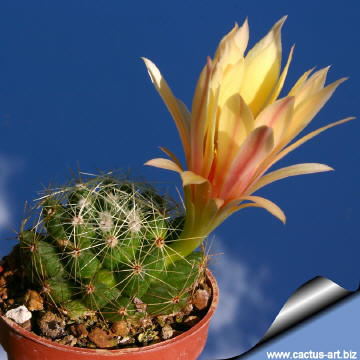 |
|
. |
|
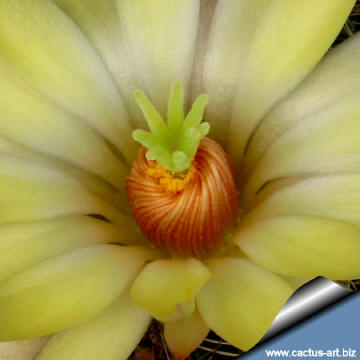 |
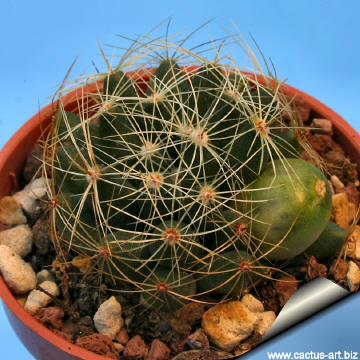 |
|
Advertising
|
|
|
|
|
Family:
Cactaceae (Cactus
Family)
Scientific name:
Mammillaria
sphaerica
First description:
A. Dietrich, Allg. Gartenzeitung 21: 94, 1853
Origin: USA (southeastern Texas), Mexico (Tamaulipas)
Habitat: Grows under bushes in the
Tamaulipan thorn scrub on plains and low gravelly hills. Altitude 0-300(1000?) m
Conservation status: Listed in
CITES appendix 2.
The taxonomic reduction of Mammillaria sphaerica to varietal rank within
the geographically disjunct and morphologically distinct Mexican
species, M. longimamma, while plausible, is still controversial.
Synonyms:
- Dolichothele sphaerica (A. Dietr.) Britt. & Rose
- Mammillaria longimamma var. sphaerica (A. Dietr.) K.
Brandeg.
- Neomammillaria sphaerica
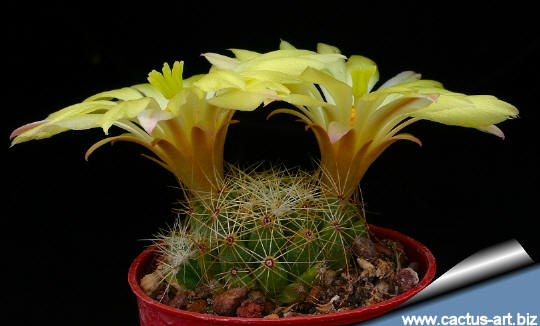
It has
soft stems. If grown correctly, it will recompense the
grower
with generous displays of lemon-yellow
flowers.
|
|
|
|
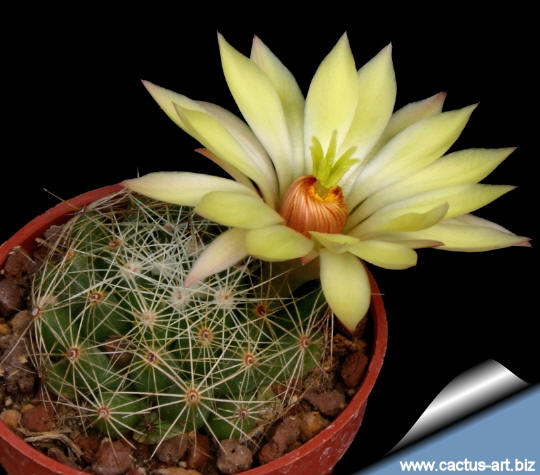
Mammillaria spaerica GL 40 Zapata County, Texas, USA
Cultivation: Very easy to grow.
Watering Needs:
It needs
regular water,
but do not water again until
dry. Also, it is a species that is dormant in the winter and requires
very little water (maybe even none) during the cold months.
Frost Tolerance: Light frost protection
required. Minimum of 5º
C for safe growing (but hardy
down
to -8°C
or less.).
Sun Exposure: In spite of its preference for shade in
the wild, in culture, good exposure to sunshine will favour good spine
development. It
can
get
sunburned if moved from shade/greenhouse into full sun too quickly.
During the spring it may be able to take full sun until the heat arrives
at the end of spring. In an area that has hot afternoon sun, it may be
able to take full morning sun, but requires afternoon shade or afternoon
light shade. If grown correctly, it will reward the grower with
generous displays of yellow flowers. Clumps will be formed quite readily
over a few years.
Spider mites are especially attracted to this species, but often are
controlled with overhead watering. Care with repotting is needed, as the
thick taproot is easily damaged.
Propagation: Seeds or offsets that appear at the base; leave
them attached to form a cluster, or wait until they are 1/3 the size of
the parent and then detach and plant.
Photo of conspecific taxa, varieties,
forms and cultivars of Mammillaria longimamma:


|
|